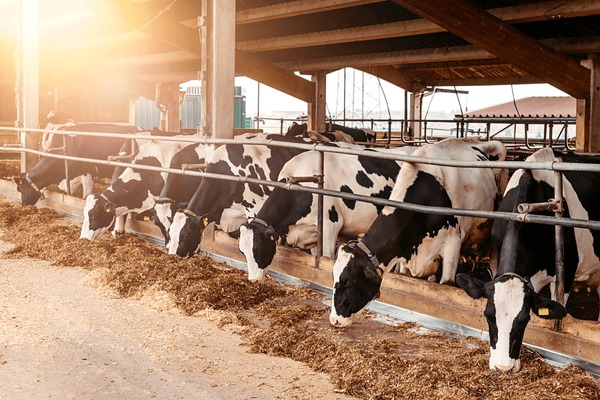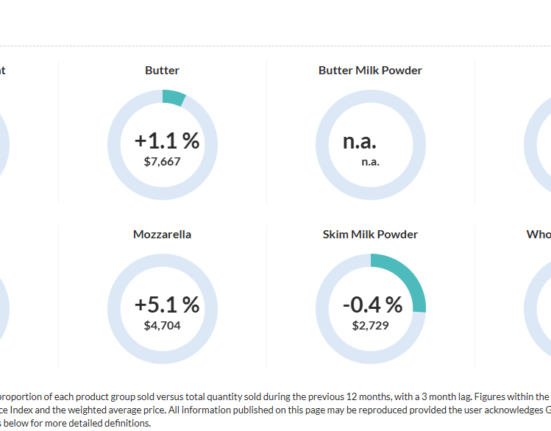March 26, 2025 | Dairy Dimension
The U.S. livestock sector is facing mounting pressure as Highly Pathogenic Avian Influenza (HPAI) continues its concerning spread, not just among poultry but increasingly across dairy operations in western states. California remains the hardest-hit, with over 755 dairies and millions of birds impacted since the virus first emerged in the region.
New detections in Nevada and Idaho dairy herds are raising fresh alarms, alongside ongoing poultry outbreaks in Pennsylvania, where a dozen commercial facilities have tested positive for HPAI in just the last 30 days.
ūüĒć A Tale of Two Strains: B3.13 and D1.1
Experts are closely monitoring two key genotypes:
-
B3.13, heavily circulating in California and Idaho, is notable for its capacity to jump between cattle and poultry, and even spread laterally among dairy farms, according to Dr. Alex Hamberg, Pennsylvania State Veterinarian and Director of the Bureau of Animal Health and Diagnostic Services.
-
D1.1, currently the dominant strain in wild birds across U.S. flyways, has been implicated in several spillover events into dairy farms in Nevada and Arizona. Unlike B3.13, there is no strong evidence yet of farm-to-farm transmission for D1.1.
‚ÄúThe clinical illnesses seem to be fewer than what we saw with B3.13, but this is still very much a developing situation,‚ÄĚ Hamberg noted during a recent industry webinar.
ūüßę Is Raw Milk Cheese Safe? Early Research Raises Questions
Adding complexity to the outbreak is growing interest in how the H5N1 virus interacts with dairy products‚ÄĒparticularly raw milk cheeses. In a recent preprint study, researchers found that cheeses aged for 60 days still contained viable virus if their pH remained between 5.8 and 6.6. By contrast, acidic cheeses with a pH of 5 or lower showed no detectable virus after aging.
While the findings are preliminary and the full study has yet to undergo peer review, they challenge the long-held belief that standard cheese-aging processes fully eliminate pathogen risk.
‚ÄúWe‚Äôre going to need a lot more data before drawing conclusions about public health risk,‚ÄĚ said Hamberg. ‚ÄúBut this is a red flag that should prompt more rigorous food safety surveillance.‚ÄĚ
A separate national survey of commercial raw milk cheeses is underway, with 100 out of 300 samples tested so far. Encouragingly, none have shown evidence of the H5N1 virus. However, with two-thirds of the samples yet to be processed, experts are urging caution and continued vigilance.
ūüõ°ÔłŹ Pennsylvania: A Model for Prevention‚ÄĒBut No Room for Complacency
While outbreaks have flared elsewhere, Pennsylvania remains one of only three U.S. states to maintain Stage 4 status‚ÄĒdefined as an ‚Äúongoing absence of the virus in dairy herds.‚ÄĚ Notably, it is the only state with over 100 dairy herds to achieve this milestone.
‚ÄúThat‚Äôs a significant achievement,‚ÄĚ said Hamberg. ‚ÄúIt means that statistically, we can say with confidence there‚Äôs no HPAI in Pennsylvania‚Äôs dairy cows.‚ÄĚ
But he also warned against overconfidence:
‚ÄúBiosecurity is still absolutely critical. The D1.1 strain is moving, and B3.13 is still out there. What works for poultry doesn‚Äôt work the same for dairies. We need tailored protocols.‚ÄĚ
ūüß≠ What This Means for Indian Dairy Stakeholders
Though the outbreak is currently U.S.-focused, the cross-species transmission of HPAI is a global concern, particularly for countries like India, which:
-
Houses the world’s largest dairy population (including high-density buffalo zones),
-
Maintains open-air livestock markets with significant intermingling of species, and
-
Has an emerging raw milk and artisanal cheese segment driven by urban consumers.
Indian animal health regulators and dairy processors would do well to monitor developments closely and proactively enhance farm-level biosecurity, especially in regions where migratory birds and open grazing are common.







